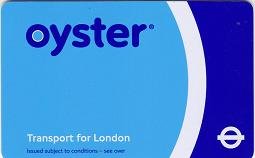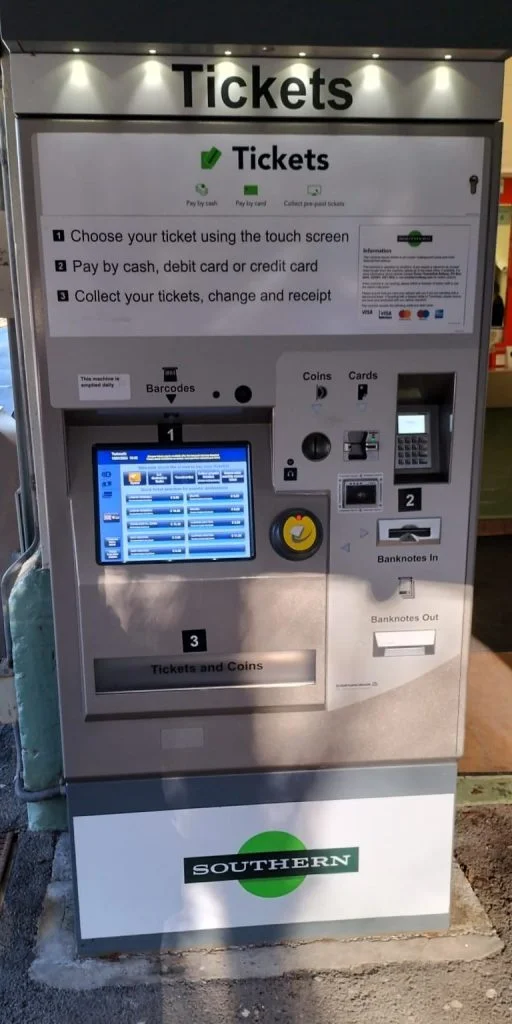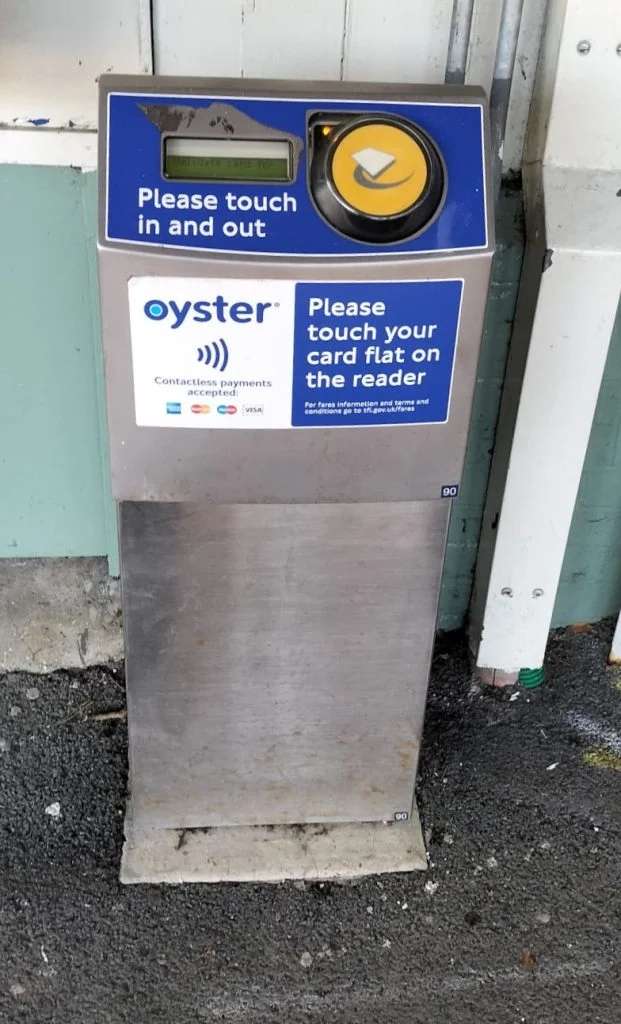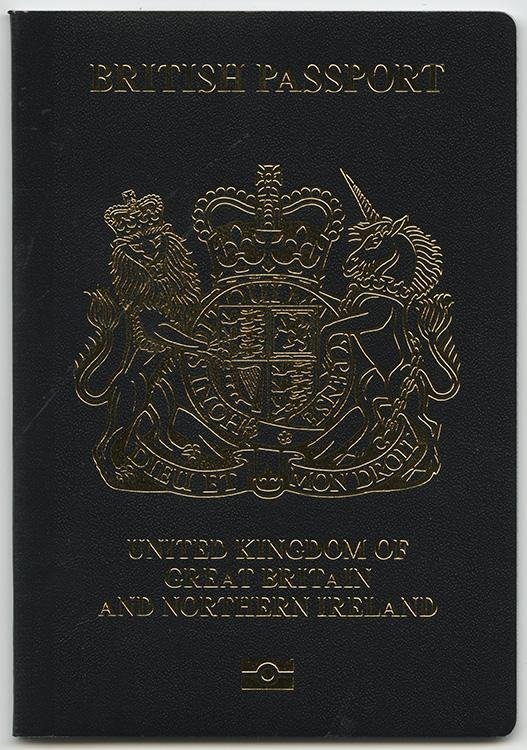What Difference Between Oyster and Contactless?
What Difference Between Oyster and Contactless? While Oyster and contactless payment methods (credit/debit cards, Apple Pay, Google Pay) offer essentially the same fare structure and daily capping on London’s TfL network, there are subtle differences to consider:
Fare Equivalence:
Both Oyster and contactless payments are subject to the same zone-based fare system and daily/weekly capping.
Therefore, the cost of a journey is generally identical regardless of the payment method used.
Key Distinctions:
Transaction Fees:
International visitors using contactless payments may incur foreign transaction fees from their banks, potentially increasing overall travel expenses.
Card Security:
Using a personal credit or debit card for travel increases the risk of loss or theft, which can be particularly stressful for tourists.
Oyster Card Specifics:
Oyster cards can be topped up with cash, which can be useful for those who wish to strictly budget their travel.
Oyster cards can be useful for those who do not have access to contactless payment methods.
In Summary:
For domestic travelers, the choice between Oyster and contactless is largely a matter of personal preference.
While Oyster and contactless payment methods (credit/debit cards, Apple Pay, Google Pay) offer essentially the same fare structure and daily capping on London’s TfL network, there are subtle differences to consider:
- Fare Equivalence:
- Both Oyster and contactless payments are subject to the same zone-based fare system and daily/weekly capping.
- Therefore, the cost of a journey is generally identical regardless of the payment method used.
- Key Distinctions:
- Transaction Fees:
- International visitors using contactless payments may incur foreign transaction fees from their banks, potentially increasing overall travel expenses.
- Card Security:
- Using a personal credit or debit card for travel increases the risk of loss or theft, which can be particularly stressful for tourists.
- Oyster Card Specifics:
- Oyster cards can be topped up with cash, which can be useful for those who wish to strictly budget their travel.
- Oyster cards can be useful for those who do not have access to contactless payment methods.
- Transaction Fees:
- In Summary:
- For domestic travelers, the choice between Oyster and contactless is largely a matter of personal preference.
- However, international visitors should be mindful of potential transaction fees and the increased security risk associated with using their personal bank cards.
What Difference Between Oyster and Contactless?
Oyster Card Explained
What Difference Between Oyster and Contactless? An Oyster card is a smartcard used for pay-as-you-go travel on public transportation in London, primarily managed by Transport for London (TFL). It’s a convenient way to pay for travel on London’s buses, trams, the Tube (London Underground), Docklands Light Railway (DLR), London Overground, TfL Rail, Emirates Air Line, River Bus services, and some National Rail services within the Greater London area.
How Does It Work
The card works by touching it on yellow card readers at the start and end of your journey (except on buses and trams, as it is a fixed fare, you don’t need to tap out). The system automatically calculates the correct fare for your journey based on the zones traveled and any applicable fare caps. You can also use the Oyster card to pay for single journeys, daily caps, and weekly caps, providing flexibility and potentially saving money compared to purchasing paper tickets.
Standard Oyster Card
- Advantages:
- Can be used by anyone, including residents and visitors.
- No expiration date, so you can keep and reuse it on future visits to London.
- After 4th September 2022 the card will cost £7 ($9 €8), and is non-refundable.
- Same fares as Visitor Oyster Card.
- Can be topped up online, at ticket machines, and at Oyster Ticket Stops.
- Disadvantages:
- No special offers or discounts available for visitors.
- No pre-loaded credit or discounts.
Visitor Oyster Card
- Advantages:
- Pre-loaded with credit (£10, £15, £20, £25, £30, £35, £40, or £50) depending on the card value purchased.
- Offers special discounts and offers at selected restaurants, shops, and attractions.
- Can be used right away without needing to top up.
- No refundable deposit, but any remaining balance can be transferred to another Oyster Card or refunded (minus a £5 admin fee).
- Can be ordered in advance and delivered to your home address before your trip,(This applies only to UK residents, TFL do not post to addresses outside of the UK).
- Disadvantages:
- Higher initial cost due to the non-refundable card fee £5 ($6.5 €6).
- Can only be used by visitors to London.
- Expires after one year of inactivity if not used.
- It has to be mentioned, but getting a Visitor Oyster card is not the easiest task for the average visitor to the UK. The card may be purchased prior to arrival in the UK via agents within different countries, go to-
What Difference Between Oyster and Contactless
Advantages & Disadvantages
Advantages
- Convenience: Oyster Cards offer a convenient way to pay for travel on London’s public transportation network, including buses, trams, the London Underground (Tube), Docklands Light Railway (DLR), London Overground, TfL Rail, Emirates Air Line cable car, and most National Rail services within the London fare zones.
- Time-saving: Oyster Cards allow passengers to tap in and out of stations quickly, saving time compared to purchasing individual tickets for each journey.
- Cost savings: Oyster Cards often provide discounted fares compared to purchasing paper tickets. Additionally, they offer daily and weekly fare capping, ensuring passengers never pay more than a certain amount for their travel in a given day or week.
- Flexibility: Oyster Cards can be easily topped up online, at ticket machines, or at Oyster Ticket Stops, offering flexibility for users to add credit as needed.
- Contactless payment: Oyster Cards support contactless payment technology, allowing passengers to simply tap their card or mobile device to pay for travel without needing to enter a PIN or signature.
Disadvantages
- Initial cost: While Oyster Cards are reusable, there is an initial cost to purchase one, which might be a barrier for occasional visitors or tourists.
- Refund process: Refunding unused credit on an Oyster Card can be a cumbersome process, requiring users to return the card and navigate through specific procedures.
- Lost or stolen cards: If an Oyster Card is lost or stolen, the credit stored on the card may be lost unless the card is registered and the user reports it promptly. This can be inconvenient and potentially costly if the card had a significant balance.
- Limited usability outside London: While Oyster Cards are incredibly useful within London and its surrounding areas, they cannot be used for travel outside this area. For travelers venturing beyond London, they may need to use alternative payment methods or purchase separate tickets.
- Top-up locations: While Oyster Cards can be topped up at various locations, including online, not all stations have top-up facilities available, which can be inconvenient for users who need to add credit in a hurry.
What Difference Between Oyster and Contactless?
Summary:
Overall, despite some drawbacks, the advantages of convenience, cost savings, and flexibility make Oyster Cards a popular choice for all visitors, commuters and travelers within London.
What Difference Between Oyster and Contactless?
Concise List of FAQs
Oyster Card Basics:
- Getting One: Stations with ticket offices, Oyster Ticket Shops, TfL Visitor Centres.
- Topping Up: Ticket Machines, Online, Oyster Ticket Stops
- Checking Balance: Machines, online, TfL app, staff.
- Usage: Buses, Tube, most London transport.
- Registration: Online (for protection against loss/theft).
Key Features & Differences:
- Fare Capping: Daily/weekly limits.
- Oyster vs. Contactless: Oyster is a smartcard, contactless is your bank card; same fares, but potential foreign transaction fees with contactless.
Practicalities & Issues:
- Refunds: Unused credit and deposit refundable.
- Lost/Stolen: Replace online or at a TfL office.
- Discounts: Available for various groups.
- Auto Top-Up: Online or via form.
- Outside London: Limited National Rail use.
- Missed Touch Out: Maximum daily fare charged; refunds possible.
- Gatwick: Yes, via National Rail or Gatwick Express.
- Travelcards: Add at machines, online, or offices.
- Thames Clippers & IFS Cloud Cable Car: Accepted.
- Not Working: Contact TfL or visit a ticket office.















